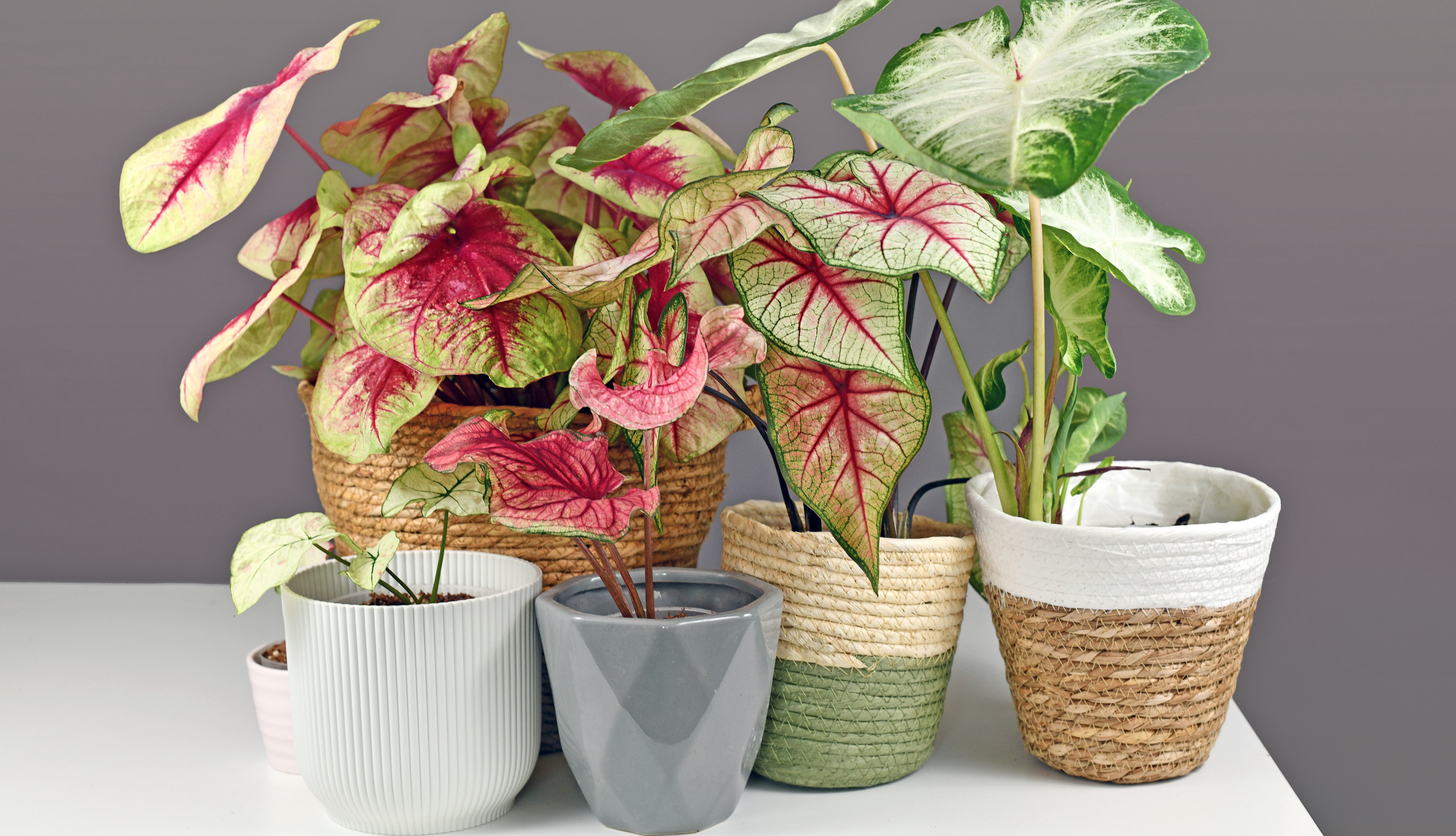
A home filled with verdant green foliage feels vibrant and alive. And if you're new to plant parenthood, it's a great place to begin. Yet green isn't the only color option when it comes to what you can grow indoors. It's possible to introduce a raft of spectacular shades into your space with a variety of plants.
Your indoor garden can range from striking pink, yellow and maroon leaves to flowering species with profusions of red, orange and purple. The right mix of indoor plants can create a true kaleidoscope.
'When a few key components, such as lighting preference, water and placement are understood and correctly executed your plants will thrive,' says Lisa Eldred Steinkopf, the houseplant guru and author of Houseplant from Cool Springs Press.
The best indoor plants to add color
Whether you prefer colorful flowering plants or fabulously-hued foliage, these species are amongst the best indoor plants to add color to your home.
1. Silver urn (Aechmea Fasciata)
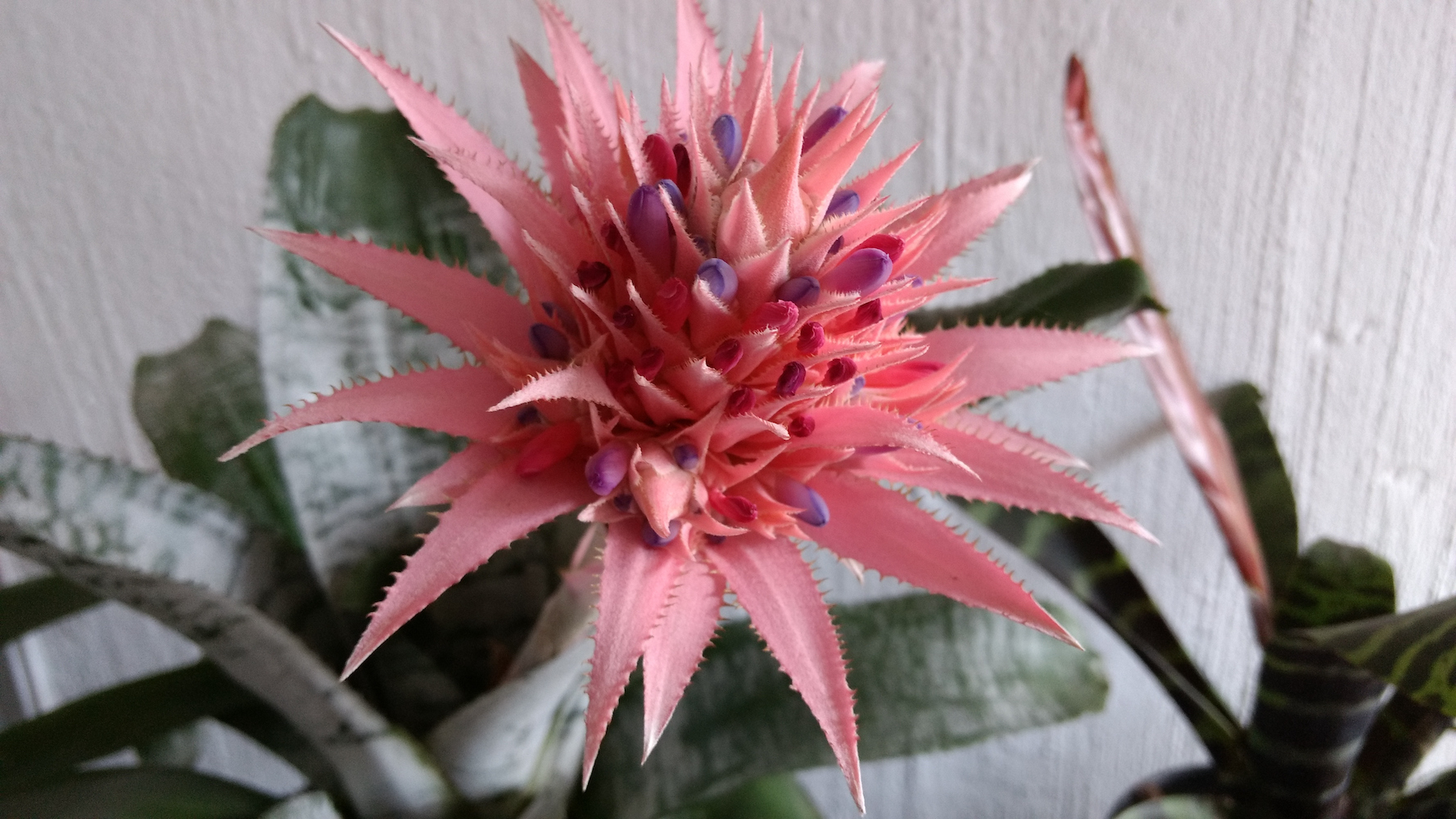
According to Lisa, this attractive yet common bromeliad is easy to grow, and ideal for how to turn your windowsill into an indoor garden as it loves sun. Related to the pineapple, the Silver urn has sharp spines on its greyish green variegated leaves. And it flowers with gorgeous pink bracts dotted with blueish buds.
'To support this plant and bring it into bloom, place it in a bright light,' says Lisa. 'An east or west facing window would be preferred as direct south sun may cause sunburn on the leaves.
'It is a "tank" bromeliad, growing in a vase shape, and the tank must be filled with water. When you water it, fill the tank until it overflows,' continues Lisa.
'If you buy this plant and it's in a plastic grower pot, it would be best to move it into a similar sized clay pot, as it can become top heavy when it sends out its large flower stalk.' Our article 'Do plant do better in plastic or ceramic pots?' will guide you further, here.
2. Scarlet star (Guzmania lingulata)
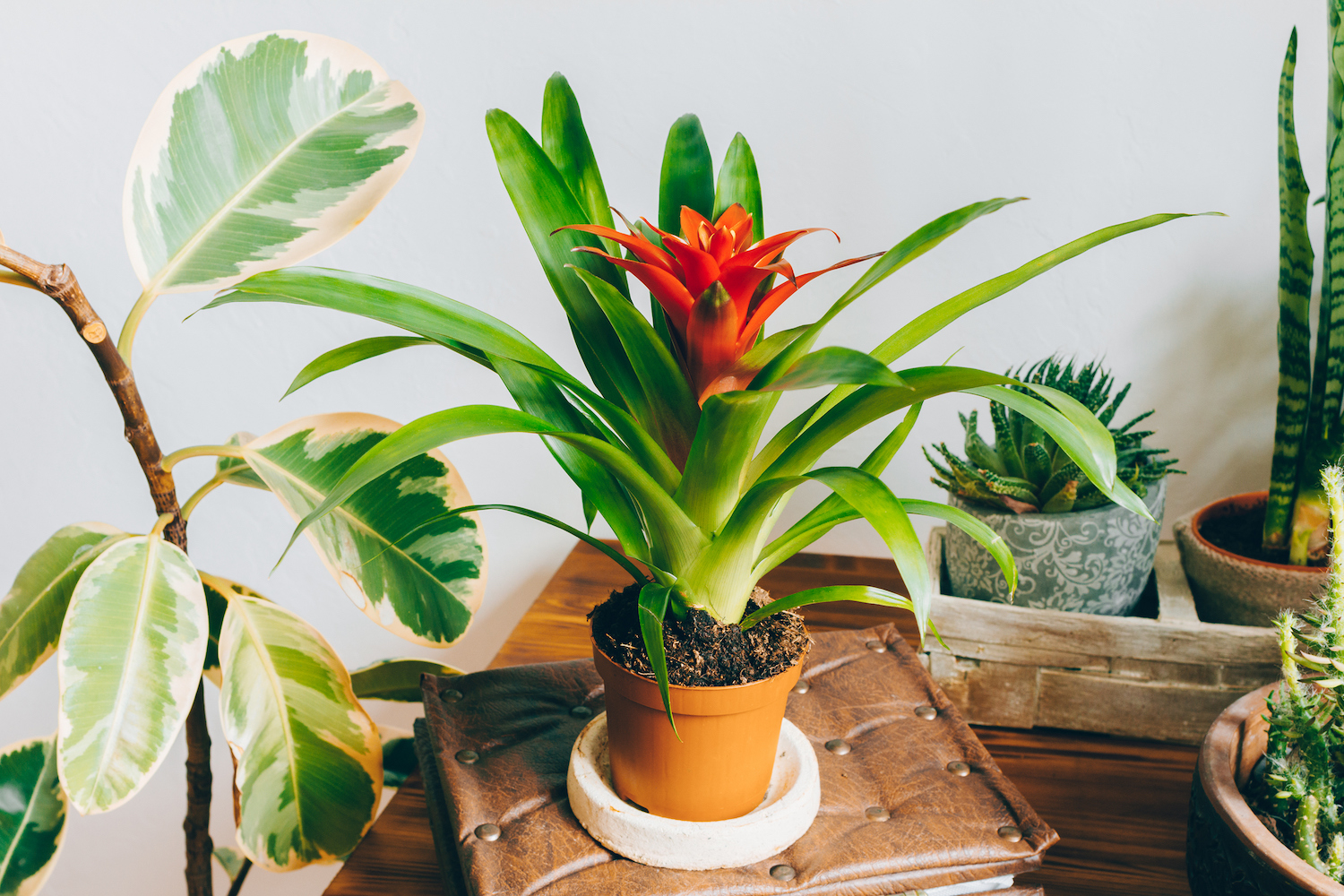
This beauty is another bromeliad, from the jungles of South and Central America. When it comes to what plants are best for a lush indoor garden, this one hits all the right notes. The colorful part of the plant are the bracts or modified leaves, which may be red, orange, yellow, purple or pink or variations in between.
'The actual flowers are small and resemble white matchstick heads that rise above the bracts when they are flowering,' explains Lisa. 'It's the color of the bracts, which lasts for months, that gives the plant interest.
'This plant is usually epiphytic, growing in the shaded undergrowth, rather than in the tops of trees where the sun is blazing. Plants that are epiphytes in their natural habitat generally makes good houseplants as they naturally survive in lower light levels. However, Guzmania do need bright light to form their colorful bracts, but not direct sun as this may burn their thin leaves,' continues Lisa.
'This bromeliad is another of the "tank" types that collect water in their natural habitat. Therefore, in our homes, that "tank" must be kept filled with fresh water. Change it completely at least once a month to prevent fungi or disease taking hold.'
3. Begonia
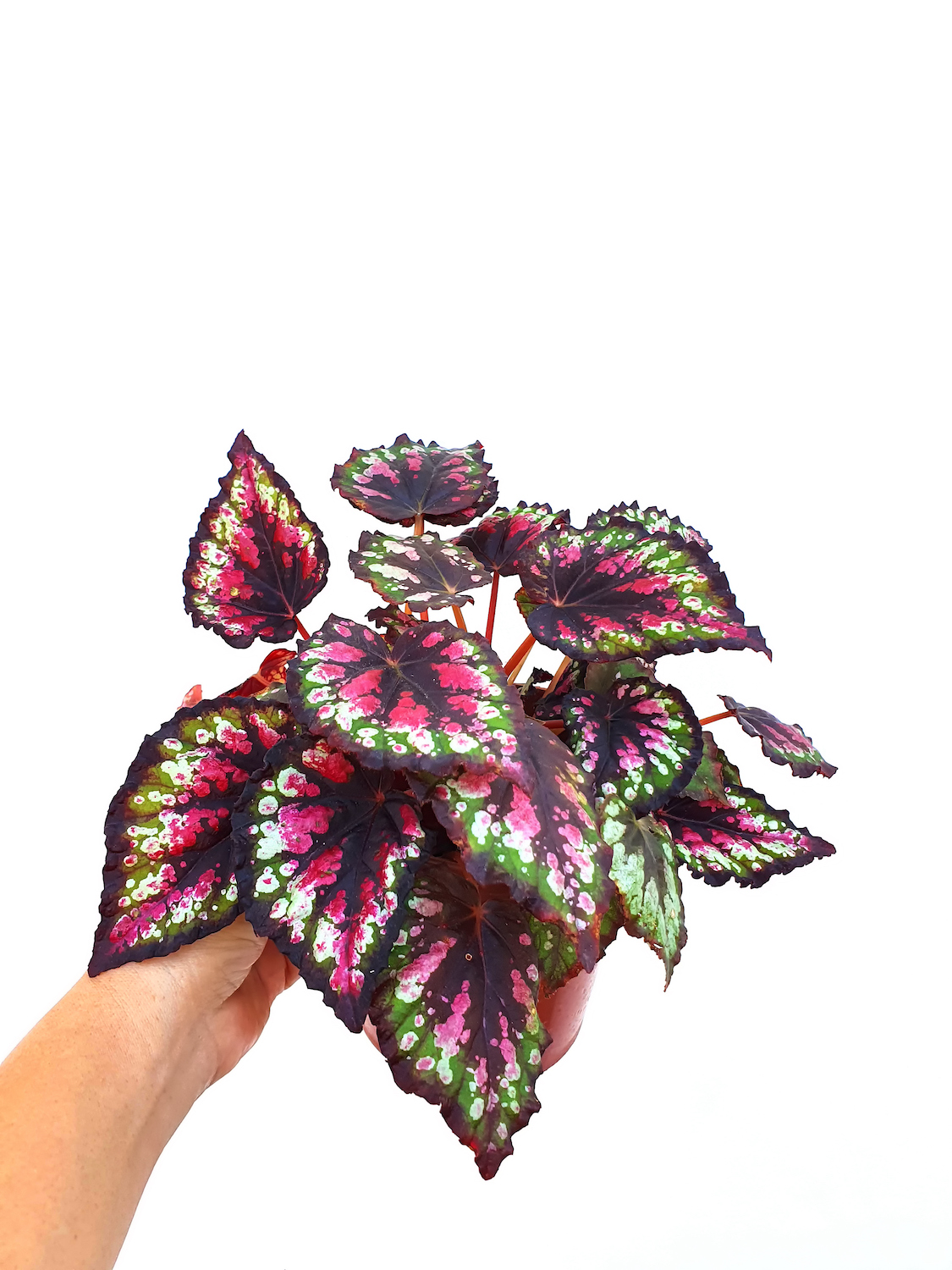
This spectacular species not only has elegantly shaped, speckled and colorful leaves, it has beautiful pink blooms that unfurl throughout the year too. Look to Begonia 'Rex salsa' or 'Angel wing' for a plant that's as beautiful with or without flowers.
The Angel Wing has speckled leaves with maroon undersides, while the Rex Salsa has bold shades of pink in its leaf patterns.
It's one of the easiest low maintenance plants for indoor gardening. Though if you want your begonia to flower, it will need a fertilizer that's slightly higher in phosphorous than those grown purely for their foliage.
'Placing an Angel Wing begonia on a pedestal to give it some height in a room and to emphasize its angelic beauty is a must,' says Hilton Carter in Living Wild. 'Bright, indirect light is going to provide the best growth and help the plant to bloom throughout the year. Put it in an east or south-facing window where it can get dappled sun.
'Keep the soil evenly moist but not damp. Use a moisture meter to help gauge the moisture level. Once the top half of the soil feels dry, add some lukewarm water. This plant likes humidity, so adding a humidifier nearby would be beneficial. Make sure to keep it away from the direct blast of air conditioners and heaters.'
4. Gold dust croton (Codiaeum variegatum)
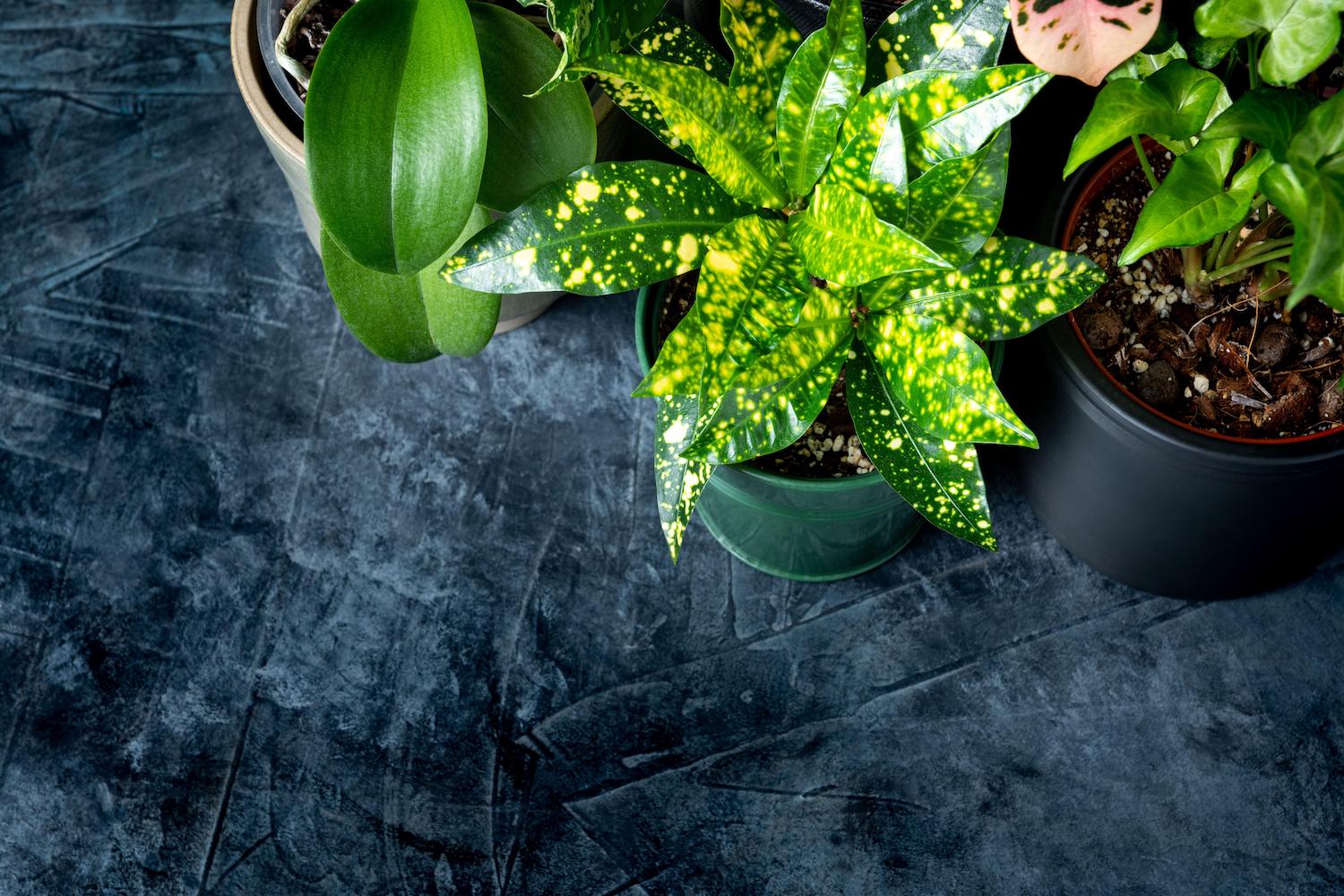
Perhaps flowering plants aren't your thing and you'd prefer to introduce color in your indoor garden through foliage? If that's the case, snap up a Gold dust croton. This unusual plant looks like it's been splattered in yellow paint by Jackson Pollock - or dusted in gold (hence the name) - so will add color and character to a room.
'While some plants have only their shape to make them stand out from the rest, this croton really sets itself apart, becoming a living work of art through its foliage characteristics,' says Hilton Carter.
'So when styling it in a space, I like to consider how that paint-splattered / acid-washed look will vibe with the art or patterns that exist around it. The best way to help it stand out is to place it against a plain background, such as a white wall, so that it appears as a burst of color like paint on a white canvas. A terracotta or clay planter will help the foliage stand out.'
'Mottled and mixtures of colors make the croton one of the most brilliant and eye-catching of all the foliage plants that are grown indoors,' says William Davidson, plant expert and author of Dr Houseplant.
'The croton requires good light and plenty of sun to retain the beauty of its multicolored leaves, but take care that it is not scorched or parched during a hot summer. In poor light, the leaves will revert to green, and the plant cannot flourish as it should.
'It requires plenty of water in summer, and regular watering during mild weather and the winter months. Water should be supplied to the soil from the top of the pot, and the plant may prefer that the water is tepid. Do not spray the leaves of a croton.'
5. Philodendron 'Pink Princess' (erubescens)
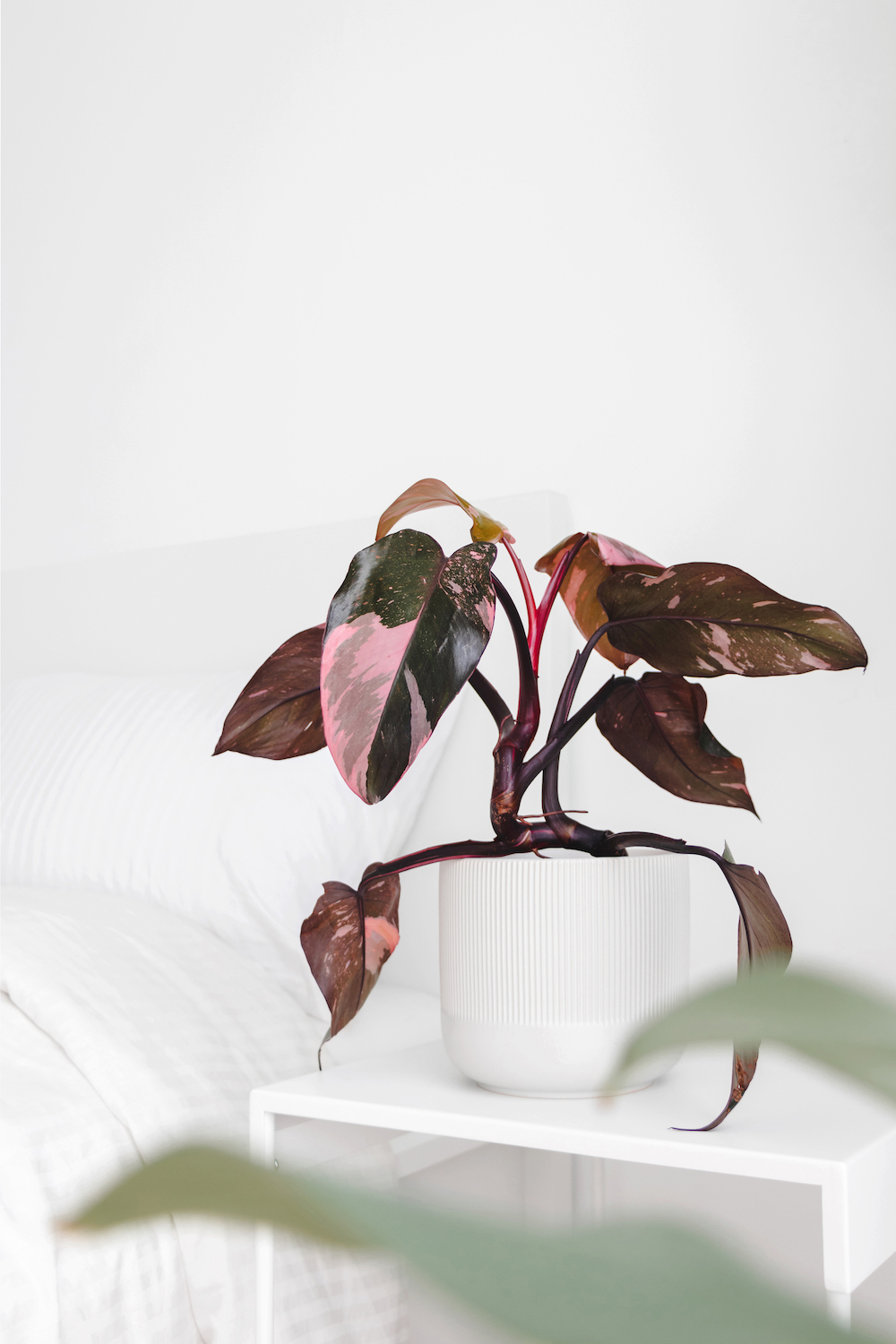
If you prefer foliage to flowers but would like to inject other colors and tones into your indoor garden, opt for a Philodendron 'Pink Princess'. This cultivar is a rare beauty. Although it's grown in a lab through a special culturing process, the distinct pink houseplant leaves don't always appear. So take good care of it if you find the rare rose-tinged version.
‘Pink Princess, is a rare and highly sought-after plant,' says plant expert, Paris Lalicata at The Sill. 'It doesn’t actually grow naturally in the wild. It is a human-made hybrid created by breeding two different philodendron species.
'The pink pigmentation is energetically expensive for the plant to keep up with so providing brighter light should help to retain its color. If the pink princess doesn’t get optimal light it may cause the new growth to revert back to green. Then you would need to cut back the plant to where the last pink leaf grew (and increase light) so new growth can arise pigmented again.
'Like other Philodendrons allow the soil to dry out between waterings before giving it a good soak. This could be every one to two weeks depending on conditions in your home. It can do well with normal room humidity by providing a little higher humidity (between 30-40%) will make it happier as it is a tropical plant.
'Adding a wet pebble tray, humidifier or glass dome is the best way to add more humidity to the plant. I would strongly advise against misting this plant as Philodendrons are very susceptible to fungal leaf spot infections so it’s best to keep the leaves dry at all times.
'In its native Colombia, Philodendron is most often found climbing trees (Philodendron translates to “loves trees”), so your Princess will appreciate a moss pole or trellis to climb.'
6. Pink Quill plant (Wallisia Cyanae)
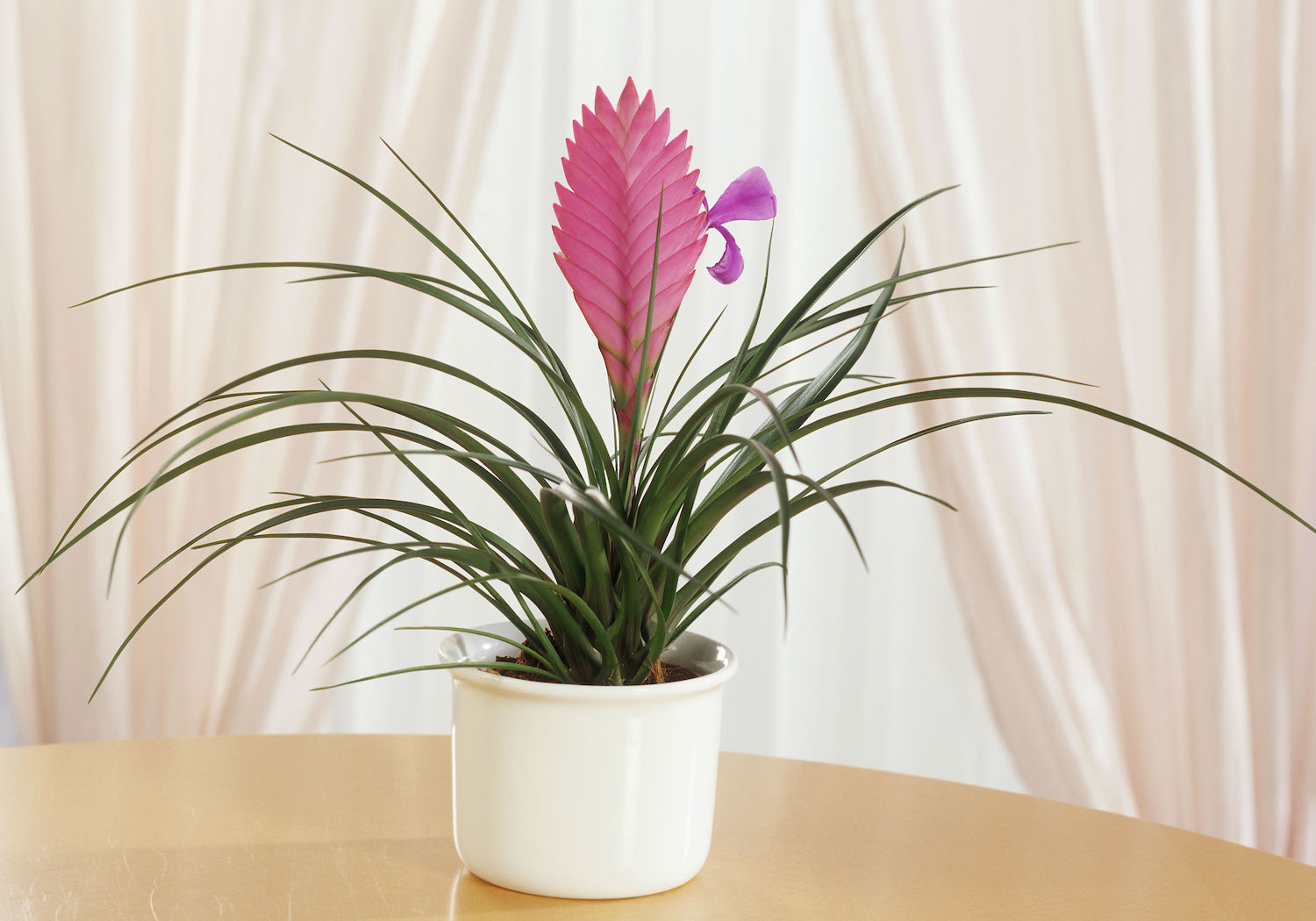
With its fuschia-pink feather-like inflorescences and purple-ish flowers, this popular plant puts on a colorful display. Another bromeliad, Wallisia's beautiful pink bracts will last 3-6 months - and under the right conditions, it will produce its pretty purple flowers.
'To ensure the plant flowers, it needs to be in a bright light,' says Lisa Eldred Steinkopf. 'Place your plant where it will receive some direct sun during the day, such as an east or west window. Although, you may choose to grow it under lights.
'Use a well-drained potting mix, adding some orchid bark, to make a chunkier mix that will allow plenty of oxygen to surround the roots.
'Water the potting medium with tepid water, making sure it drains through the bottom of the container.
'After the flowers have faded, the pink bracts will remain colorful for months,' says Lisa.
7. Aglaonema Wishes (Chinese evergreen)
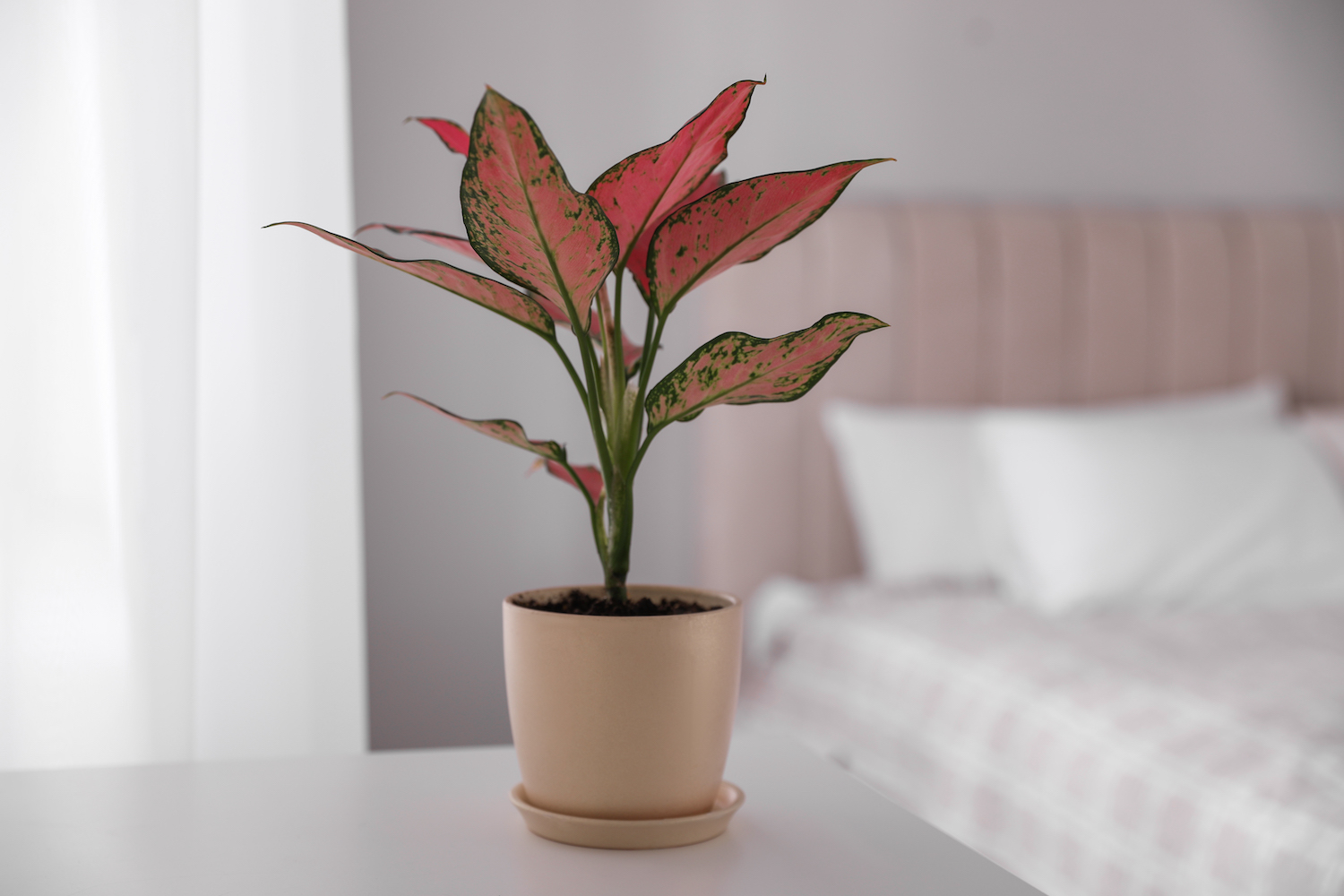
Another colorful cultivar, Aglaonema Wishes is purported to bring luck and good fortune to those that grow them, according to feng shui. Whether that's true or not, it will certainly bring beauty and joy to your home with its pink variegated leaves.
Considering its delicate beauty, this pretty plant is actually easy to care for. It likes to be watered every week or two, and is more likely to suffer from over-watering than under. It also thrives in bright, indirect light but doesn't like direct sun.
'Aglaonema are native to subtropical rainforests in Thailand and Indonesia where they get diffused light underneath the canopy of other trees and plants,' says Paris at The Sill.
'The Aglaonema Wishes is another cultivar that doesn’t naturally occur in the wild. Despite being a cultivar, the wishes requires similar care to other Aglaonema species and is a relatively easy going plant.
'This plant will do well in medium-bright indirect light, and even some morning direct sun. It’ll be ideal to place them in an East or West facing window, or a diffused South window.
'While they can tolerate lower indirect light in a North window it will cause them to grow more slowly and even stunt their growth. So if you want your Aglaonema to perform well, the brighter the light the better.
'Be sure to allow the soil to dry out between waterings, which could be every one or two weeks. They can tolerate normal room humidity between 20-30% but will always benefit from higher humidity levels. For potting, you can use any standard well-draining potting mix.'
8. Caladium
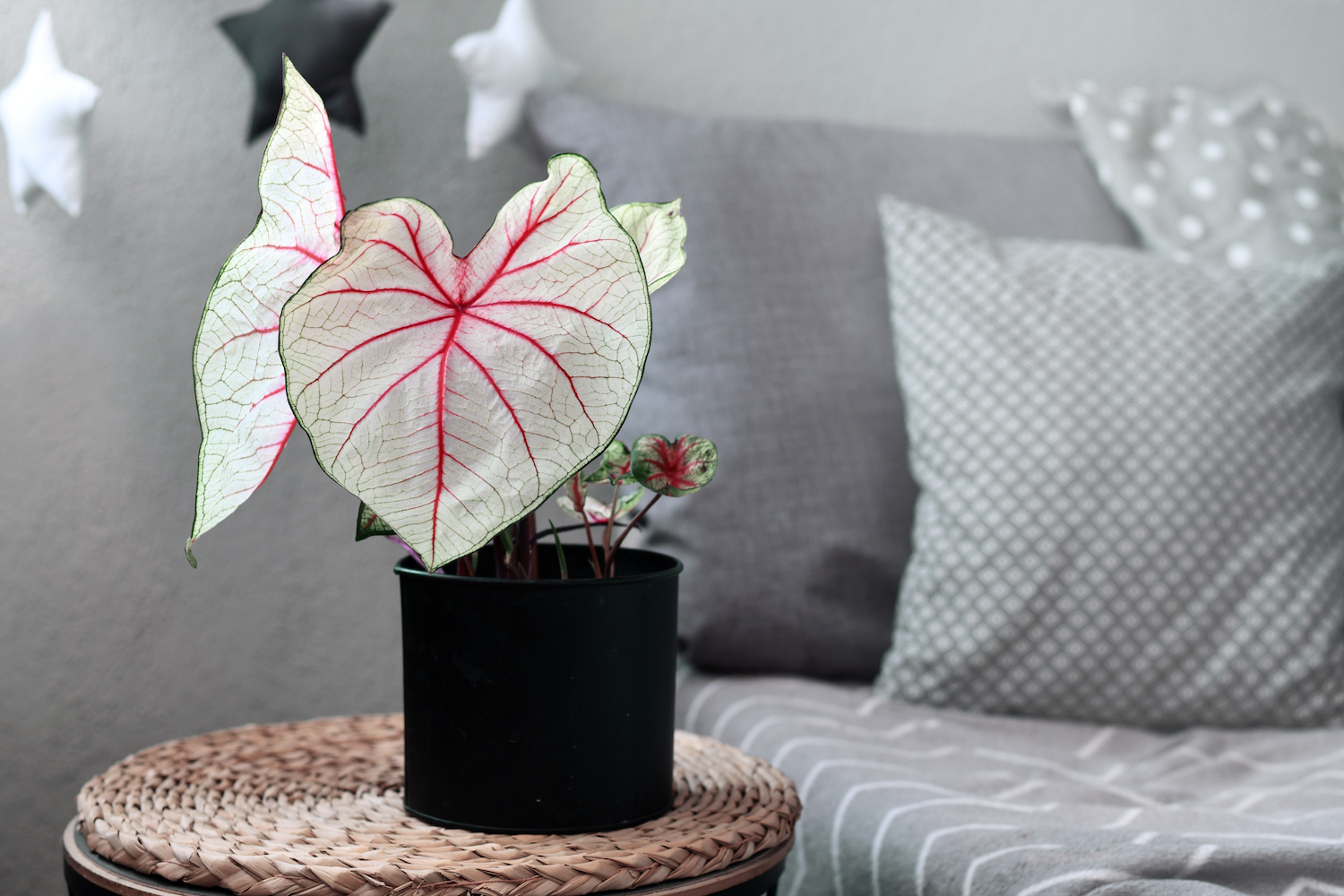
This stunning species is in short supply due to last year's devastating hurricanes and adverse weather events in Florida, where many are grown. Although already sold out in many retail outlets, Caladiums are plants to add to the wish list if you can't get your hands on any of the many eye-catching varieties.
They're available in a vast spectrum of striking shades and spectacular leaf patterns, from the palest pink and white to deep fuschia and red, with contrasting veins and edges. Among the most beautiful (in our opinion) are the Spring Fling, Florida Fantasy, White Queen and Festivia.
With large heart-shaped leaves and hues to rival any flowering houseplant, a Caladium will introduce color and interest to an indoor garden. Look out for the 'fancy leaf' varieties which have larger leaves than the 'strap' type.
'The Caladium's decorative leaves create a bold statement and the huge variety of colors offers many options to choose from for your living space,' says Hollie Walters, founder, Blue Buddha Farm.
'One of my favorites is the "Pink Symphony" with its delicate translucent pink leaves. There is a diverse range of caladiums available, each offering its own unique charm and color palette for creating beautiful indoor gardens.
'Place your caladiums in a location that receives bright, indirect light. They prefer warm temperatures, over 75 F, especially when sprouting. I do not do anything special for humidity when I grow them indoors.
'Keep the soil consistently moist but not waterlogged. Caladiums may go dormant during the winter months, losing their leaves. Reduce watering and allow the plant to rest. When new growth emerges in spring, resume regular care.'
9. Air plants (Tillandsia)
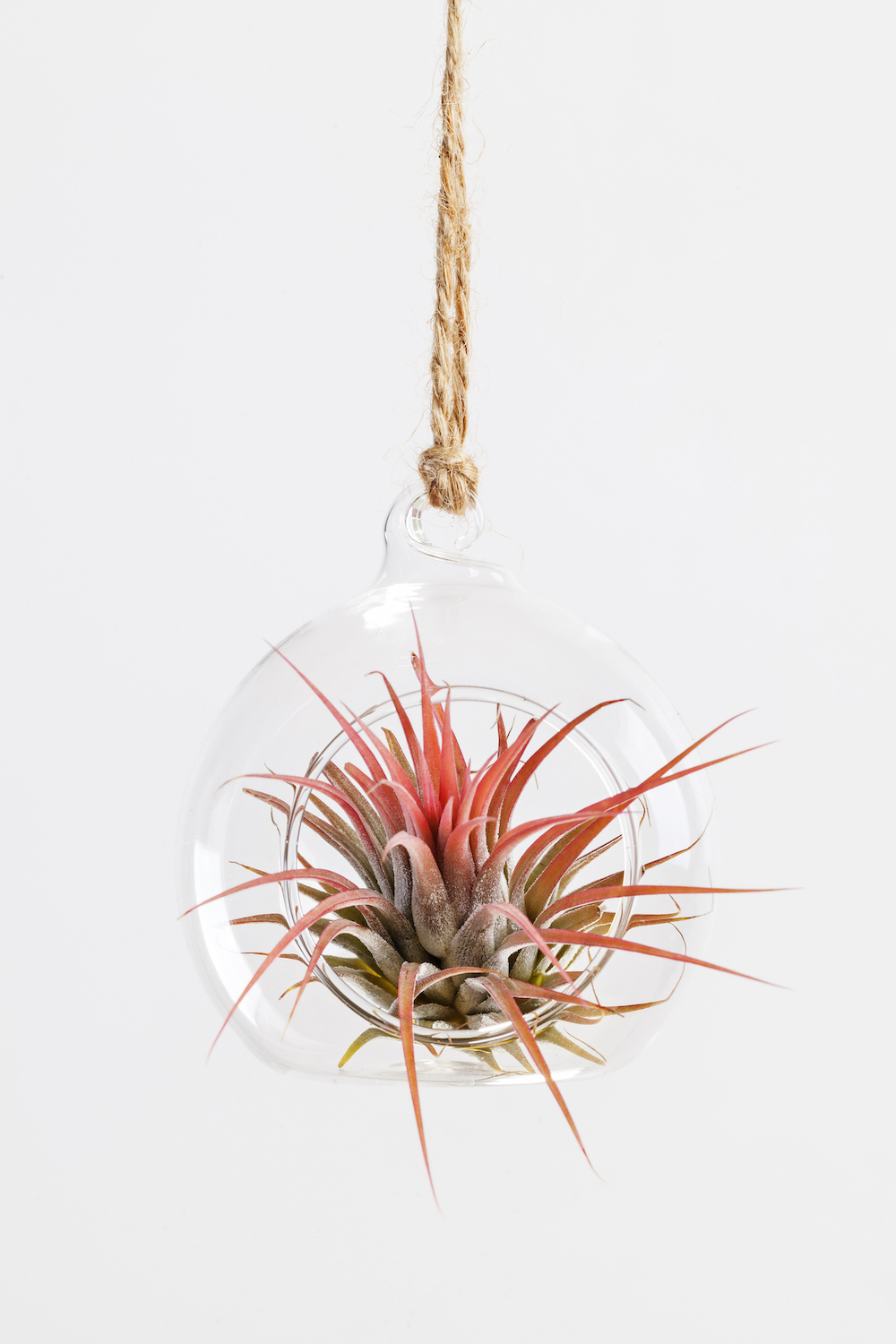
These unusual plants have been trending for some time. Native to south and central America, they appear in southern parts of the US too, appearing to hang off trees.
Although, they attach themselves to other plants, Tillandsia (air plants) are not parasitic. As an indoor plant, they are easy to care for and would make a good low maintenance plant for beginners.
'Tillandsia have special water-collecting receptacles called Trichomes covering them entirely,' explains Lisa. 'They collect water and store it until the plant needs it. In nature, they receive their nutrients from the rain.'
'Their roots aren't taking up water and nutrients like most plants, but are merely holding the air plant to whatever it is clinging to.
'Air plants are easy to take care of in your home. They do best with as much light as you can give them. They grow well in west or south windows, blooming regularly and making more pups.
'Hanging them in glass orbs near the windows helps keep the humidity higher and allows them to be closer to the light.'
10. Poinsettia
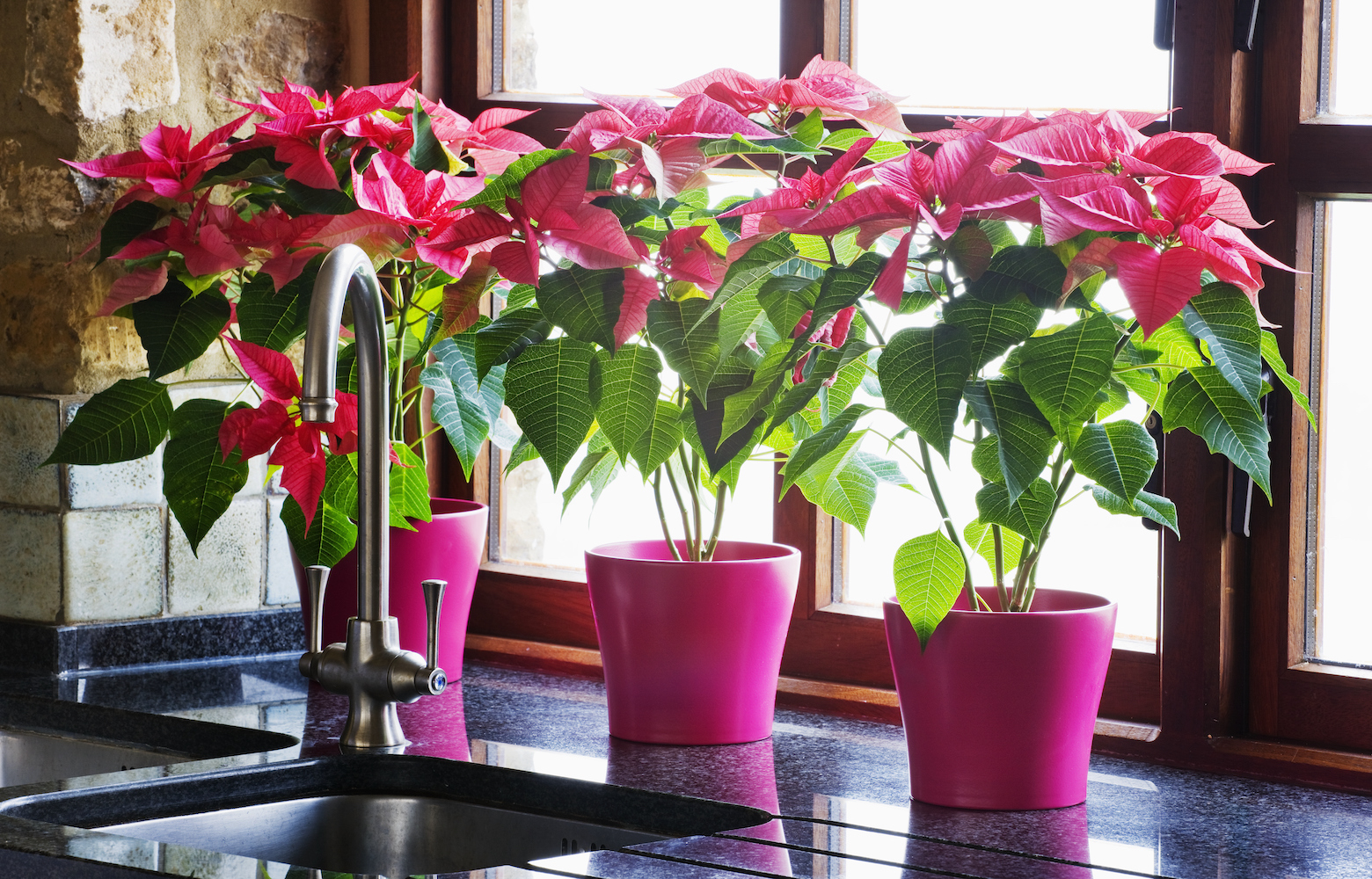
Popular at Christmas and during the winter holidays for its burst of brilliant red or cool cream tones, this plant is not just available in the colors we're most familiar with. There are beautiful pink, coral and bi-colored varieties now too.
'The plant’s leaves are pale green and the flowers uninteresting, but the brilliantly colored bracts are a magnificent attraction,' says William Davidson. 'The bracts are, in fact, colored leaves that begin to develop at the top of the plant in the fall.
'The poinsettia must have plenty of light to maintain the color of its bracts. It will not be harmed by weak, winter sunshine once established, but young plants should be protected from direct sun and cold drafts,' continues William.
'Keep the potting soil moist and make sure it is not allowed to dry out while the plant is growing and in flower.
'After flowering, cut back the main stems to a length of about 4 inches. Store the plant in a warm, dry place and wait until new growth is apparent. The watering can be reduced once the plant has flowered but return to the normal amount after pruning or repotting in mid summer.
'These eye-catching plants are brought into stores for the winter season, but cared for correctly, will last for a considerable time.'






